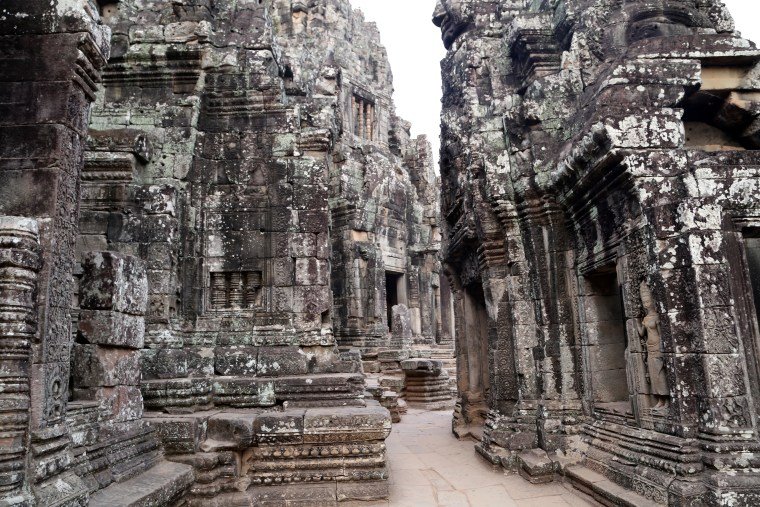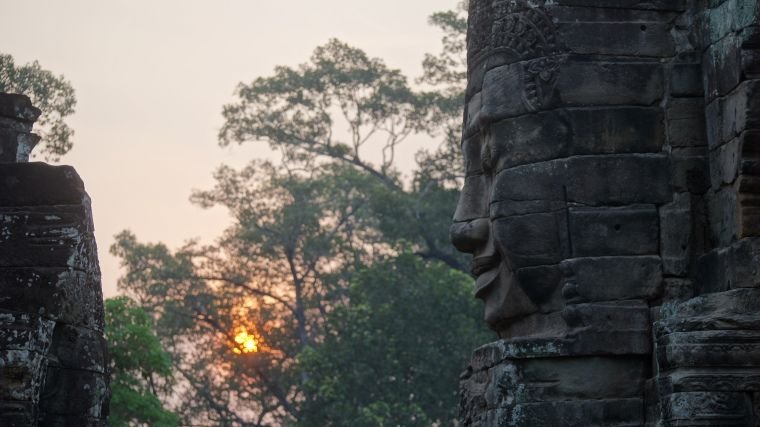Built around 1190 AD by King Jayavarman VII, Bayon is a Buddhist temple but it incorporates elements of Hindu cosmology.
Dating from the 12th century, Bayon Temple is the spectacular central temple of the ancient city of Angkor Thom. The complex is located just to the north of the famous Angkor Wat.

Angkor Thom was built as a square, the sides of which run exactly north to south and east to west. Standing in the exact center of the walled city, Bayon Temple represents the intersection of heaven and earth.

Bayon is known for its huge stone faces of the bodhisattva Avalokiteshvara, with one facing outward and keeping watch at each compass point. The curious smiling image, thought by many to be a portrait of Jayavarman himself, has been dubbed by some the "Mona Lisa of Southeast Asia." There are 51 smaller towers surrounding Bayon, each with four faces of its own.

Bayon Temple is surrounded by two long walls bearing an extraordinary collection of bas-relief scenes of legendary and historical events. In all, there are are total of more than 11,000 carved figures over 1.2km of wall. They were probably originally painted and gilded, but this has long since faded. If you enter Bayon by the east gate and view the reliefs in a clockwise direction, here's what you'll see
Hi! I am a robot. I just upvoted you! I found similar content that readers might be interested in:
https://asianbuddha.wordpress.com/bayon-temple/